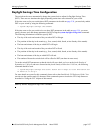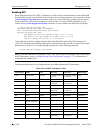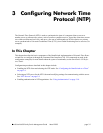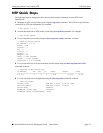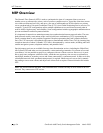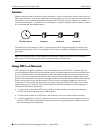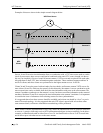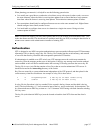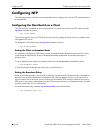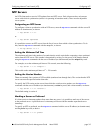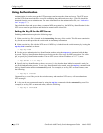
Configuring Network Time Protocol (NTP) NTP Overview
OmniSwitch 6600 Family Switch Management Guide March 2005 page 3-5
Stratum
Stratum is the term used to define the relative proximity of a node in a network to a time source (such as a
radio clock). Stratum 1 is the server connected to the time source itself. (In most cases the time source and
the stratum 1 server are in the same physical location.) An NTP client or server connected to a stratum 1
source would be stratum 2. A client or server connected to a stratum 2 machine would be stratum 3, and so
on, as demonstrated in the diagram below.
The farther away from stratum 1 a device is, the more likely there will be discrepancies or errors in the
time adjustments done by NTP. A list of stratum 1 and 2 sources available to the public can be found on
the Internet.
Note. It is not required that NTP be connected to an officially recognized time source (for example, a
radio clock). NTP can use any time source to synchronize time in the network.
Using NTP in a Network
NTP operates on the premise that there is one true standard time (defined by UTC), and that if several
servers claiming synchronization to the standard time are in disagreement, then one or more of them must
be out of synchronization or not functioning correctly. The stratum gradiation is used to qualify the accu-
racy of a time source along with other factors such as advertised precision and the length of the network
path between connections. NTP operates with a basic distrust of time information sent from other network
entities, and is most effective when multiple NTP time sources are integrated together for checks and
crosschecks. To achieve this end, there are several modes of operation that an NTP entity can use when
synchronizing time in a network. These modes help predict how the entity behaves when requesting or
sending time information, listed below:
• A switch can be a client of an NTP server (usually of a lower stratum), receiving time information
from the server but not passing it on to other switches.
• A switch can be a client of an NTP server, and in turn be a server to another switch or switches.
• A switch (regardless of its status as either a client or server) must be peered with another switch. Peer-
ing allows NTP entities in the network of the same stratum to regard each other as reliable sources of
time and exchange time information.
UTC Time Source Stratum 1 Stratum 2 Stratum 3



